How I Am Preparing For Menopause
Women Are Not Small Men: This Is How To Optimize Your Lifestyle For Every Stage
I haven’t started menopause yet, but I am definitely thinking about how to prepare my body for this phase of my life. I’m certainly no expert, but here’s what I’m focused on when I think about how to prepare for menopause.
It’s no secret that life is a bit different for women when it comes to hormones. For clarification, I’ll be talking about those of us born with an XX chromosome, not social gender.
One of my favorite quotes is “women are not small men,” which is the title of my friend Dr. Stacy Sim’s TED Talk about shifting the science paradigm to account for hormonal differences between the sexes when it comes to diet, health, and athletics.
Though most of the research lumps us in with men, Dr. Stacy (and others) have led the charge to educate and inform us on how to optimize for every stage of our lives.
Most women see menopause as an inevitable negative experience. Fatigue, unstable moods, depression, weight gain, etc. are all viewed as normal. What if it isn’t? I’m determined to avoid (or at least minimize) these symptoms.
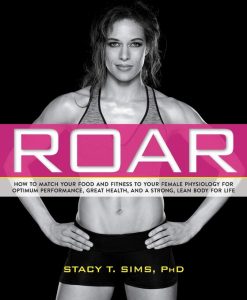
Here are the ways I’m using all these tools to prepare myself for menopause, from workouts to nutrition and obviously mobility, sleep, and recovery.
Women Are An Anomaly
While competing on the rowing team in college, Stacy started to notice the ways training failed for women where it succeeded for men. As she describes in her TED Talk, she once ran for two hours on a treadmill as part of a research project. In the first week, she felt fine and did great. But in the second week, by the last half hour of the run, her body felt utterly depleted. This trend extended to other women in the trial, yet the men largely kept the same results.
As she continued on her path to becoming a researcher, she began to question why so little research is done on women when they make-up 50% of the population. Sometimes she was told “why study women when we still know so little about men?” or “the differences are so small. There’s no need.”
Ugh. These were responses she received from Stanford scientists.
Despite the fact we make up half the human population, women are an anomaly in science. We get lumped in with men in most studies despite the known hormone differences if we are involved in studies at all. This is why it can be so difficult to find female-aware research, and why books like Roar are so powerful.
Our Menstrual Cycle
The key difference is our menstrual cycle. From puberty onward, we have a hormone cycle that changes how we react to training, nutrition, and alters our body’s requirements in strong ways. Men experience relatively stable hormones all month long, but for women, at certain times our hormones are running high and strong. At others, they are nearly non-existent.
So, health and fitness advice not only relies on research that is predominantly focused on men but also ignores the role of our menstrual cycles.
Our cycle is an incredible way to monitor our health. Are we regular? Are we matching our training and nutrition to support our hormones? Or are we following dietary advice based on research on men? Women have periods, and we need to have that conversation. This shouldn’t be a hush-hush conversation. Again, we are half the population!
In this video from the TRS archives, our friend and Stanford physician, Dr. Richard Lee goes in-depth about how women’s hormones differ from men’s over the course of our cycle. Not only do estrogen and progesterone play a major role in our health alongside testosterone (whereas men primarily rely solely on testosterone), but our hormones peak and trough over the course of our 28 to 40-day cycle.
Nutrition: Higher Protein, I Don’t Fast, Enough Carbs, & Salt!
Fasting: One of the things I don’t do is fast. While there may be some peripheral health benefits to intermittent fasting, I’m not convinced it’s great for women. The research shows that intermittent fasting can be effective for weight loss in men, but is not as effective for women. Although more research is needed, the likely reason fasting is not as effective for us is that it disrupts our hormones. The hormones that regulate key functions in women, like ovulation, metabolism, and mood, are very sensitive to energy intake. So, what and when you eat can negatively affect your reproductive hormones and lead to all sorts of health issues. Our goal as women is to achieve hormonal harmony, not hormonal disruption.
My favorite article on this topic is by the awesome team at Precision Nutrition, who has written extensively about intermittent fasting for women.
Instead of fasting, I focus on a higher protein/lower carb (not low carb) diet most of the time. I avoid processed carbs and am an evangelist for E.C. Synknowski’s program the #800gramchallenge, which is all about adding fruits and vegetables to your diet.
Carbs: I’d recommend in the neighborhood of 130 to 140 grams daily in active women, depending on body weight. Higher in the week before our period. Slightly less for inactive women.
Women seem to rely more on carbohydrates than men and are typically more insulin resistant pre-menopause. Kelly & Stacy talk about this subject extensively in the video below, but, the gist is that too low carbohydrate can cause women’s cycle to stop just like fasting, not to mention skyrocketing cortisol and increasing body fat.
I also tend to have massive carb cravings in the week before my cycle. I consider that a message from my body and I slightly up my carbohydrate intake with an extra piece of fruit or a little popcorn (which is my all-time favorite food).
Protein: I also work hard to eat enough protein. And I do work at it because, as an athletic woman with a daily protein goal of 145 grams, I need to constantly keep an eye on my protein intake. Both men and women (but especially women) often get too little protein, and this is problematic for preparing for menopause. Menopause results in an abrupt stop of hormones leading to a loss in bone density and muscle mass.
As I near menopause, I want to make sure I have good skeletal strength, enough muscle mass, and ample resources to build and maintaining these tissues. My friend EC of OptimizeMe Nutrition, suggests a range of 0.7-1.0 grams of protein per pound of body weight a day to build or maintain lean muscle mass. My guess is many of you are only eating ½ that amount.
Just getting good protein from your diet is an awesome start, but so is adding collagen protein (Kelly wrote a great article about this) and Branch Chain Amino Acids (or “BCAAs”). Dr. Sims discusses how leucine is an essential amino acid for stimulating muscle synthesis, but most women are deficient. This amino acid is high in animal protein and can also be obtained from BCAAs and other supplements.
And, a note on soy protein: just don’t do it. Soy has almost no leucine, and as we said, we need this amino acid for building lean body mass. Plus, as a breast cancer survivor, the absolute last thing I want to put in my body are things with estrogenic effects, like soy protein. There are tons of amazing protein sources out there, including vegetarian and vegan ones, so there is really no need to eat soy.
Hydration & Salt: In the 10 days leading up to your period, you are most likely to damage muscle during training (which is another reason to up your protein). You’ll also be depleting sodium from your body as you reach peak ovulation. If you are overhydrating and not salting your food, you can dehydrate your muscles.
Making sure to get enough electrolytes, especially salt, especially 10 days or so before your period is also powerful for balancing your hormones and preventing injury as well as increasing lean mass.
Kelly wrote a great piece on this called: “Chase Salt.” Our absolute favorite electrolyte supplement is LMNT.
You Must Load Your Tissues!
Lean body mass and skeletal strength are key protective elements for menopause. How do you build both of these? Not with cardio. Cardio is a form of catabolic training, meaning it breaks down muscle over time. Running, hiking, Peloton-ing, cycling are all forms of catabolic training. These have a place in your training regime as you prepare for menopause, of course, but should not be your only game.
When women enter menopause, we can lose up to a third of our skeletal mass permanently. Obviously, we want to shore up our bodies and prepare for this with training.
I have been lifting weights and/or doing CrossFit-style training since I was 15 years old, so this kind of resistance/strength/plyometric training is natural for me. For those of you cardio junkies, it’s a mental shift to incorporate this kind of training into your life. But, fear not! Stacy and several other great coaches I know say that adding in 3 strength training workouts/week is plenty and those need only be 20-30 minutes long.
If you are an endurance athlete approaching menopause, running and cardio will become higher risk during and after menopause because of the effects on your bone density. While you don’t have to give up endurance training, you must incorporate strength training into your overall regimen.
Bottom line: you’ve got to load your tissues before, during, and after menopause. Cardio is not enough.
Stress: Sleep, Recovery, & Lowering Cortisol
Dr. Lee talks about how stress turns the building blocks for our hormones into cortisol instead in “the essential hormonal primer for women and people that know women,” from our archives. Chronic low cortisol keeps us from being able to produce enough progesterone, estrogen, and testosterone, which is why women under stress often stop experiencing periods.
Not having a period is a bad sign if you are premenopausal. It likely means your stress burden is too high, and you’re converting too much of your DHEA into cortisol instead of the hormones you need.
This is why one of the biggest ways to optimize your hormones, health, and prepare for menopause is to address sleep, recovery, and lowering cortisol.
Sleep: Kelly and I are obsessed with sleep as we age and we guard it at all costs. I also track my sleep and recovery nightly with a Whoop.
According to Matt Walker, author of Why We Sleep, sleep is our superpower as humans. According, to Walker, sleep is the body’s most important recovery process. There are also powerful links between sleep loss and, among other things, Alzheimer’s disease, cancer, diabetes, obesity, and poor mental health.
The Ready State coach, Geoff Price, wrote a great piece called “The Power of Sleep: Nature’s Greatest Health and Performance Enhancer” that has much more detail about why sleep is so crucial for our health.
Here’s what Kelly and I do to improve our sleep hygiene:
- We set ourselves up between 7 and 8 hours of sleep/night. By set up I mean, we work backward from when we know we need to get up and make sure we have enough hours in bed to accumulate that much sleep. It’s important here to note that it’s natural to lose up to an hour of sleep/night with normal disruptions (like bathroom visits) so, in order to get 7 hours of sleep, you need to be laying down for 8 hours!
- We try to go to sleep around the same time each night.
- We sleep in a cold and very dark room.
- We massively limit our alcohol consumption, because alcohol is not a sleep aid, contrary to popular belief. While it might help induce sleep, “alcohol is one of the most powerful suppressors of REM [rapid-eye-movement] sleep,” according to Matt Walker.
- Even though we love coffee, we try to stop drinking caffeine after 1:00 p.m.
Recovery: Optimizing our recovery after workouts is also huge. Stacy recommends women get some protein on board within 90 minutes of exercise since women’s post-exercise metabolism returns to normal within 90 minutes, while guys take 3 hours or more. This is an essential time for getting protein for muscle building and recovery. A high leucine protein source like BCAAs or collagen protein during this post-workout window is my go-to.
Not surprisingly, I also use mobility work as a way to downregulate and recover in the evening. We have found that just spending ten minutes on the floor at night with a roller or ball lowers our stress states and helps us be more “rest-and-digest” versus “fight-or-flight.” Tissue rolling and mashing before bed is great for getting a one-two punch for our sleep quality, too.
We obviously have tons of mobility exercises and routines you can follow on The Ready State.
Cortisol/Stress Management
We use other stress/cortisol management tools as well. One of those things is cold exposure. Even though I don’t gravitate towards cold showers or ice-baths, they help regulate heart rate variability, which is a marker of nervous system recovery, and may be more effective for women even than for men. Ready State author Keenan Eriksson goes in-depth in “The Power of Cold Therapy” which offers techniques ranging from cold showers to daily ice plunges.
I’m also big on adaptogenic herbs, especially ashwagandha, schizandra berry, and tart cherry. These all have been used for centuries to lower inflammation and push the adrenals toward a more balanced state. Ashwagandha and schizandra berry both work on cortisol especially and tart cherry extract lowers inflammation.
Dr. Sims is a fan of using tart cherry before bed and adding these herbs in for menopausal women looking to lower the effects of hot flashes and other symptoms. She discusses this in detail in her interview about menopause on the Fit & Chips podcast.
Wrapping Up
Women are not small men, and the key difference is our menstrual cycle. While men run on a relatively stable hormone schedule that primarily relies on testosterone, women have a fluctuating cycle with progesterone, estrogen, and testosterone all playing a key role.
As we approach menopause, the better we can build lean body mass and optimize our hormonal health, the better we can get through this phase of our life while remaining happy, healthy, and resilient.
Using the work of those like my friend Dr. Stacy Sims, I have learned how to optimize my nutrition, fitness, and recovery as a woman. I make sure I get enough protein and I don’t toss carbs out the window, and I also know when in my cycle I need to optimize recovery after exercise.
Just because we are different from men doesn’t mean we’re doomed to suffer through menopause or be stuck with the negative changes associated with this phase. By aligning our lifestyle with our unique biology, we can be powerful in our uniqueness.
I strongly recommend my friend Dr. Sim’s book Roar for one of the only comprehensive guides to training in alignment with your biology as a woman. I also love the work of Dr. Richard Lee. This video from the archives gives a great understanding of the female hormone differences and the role of stress and cortisol in our lives.
I love being a part of this movement and dialogue for better female health. Despite the fact we represent half the human population, we are poorly represented in research. By keeping this conversation going, we can move the needle towards a more aware discussion of human health and fitness and help women face the unique challenges they face.
I hope this helps you achieve your Ready State!












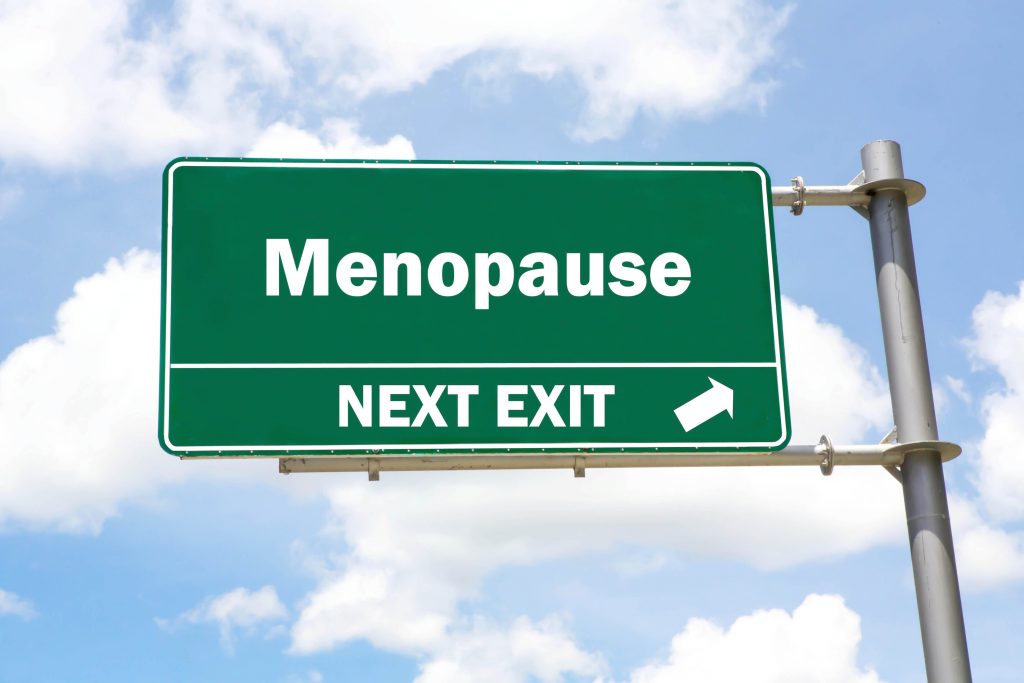
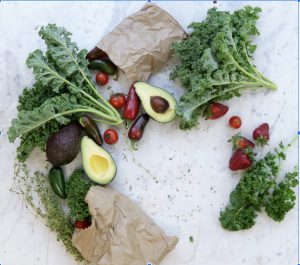
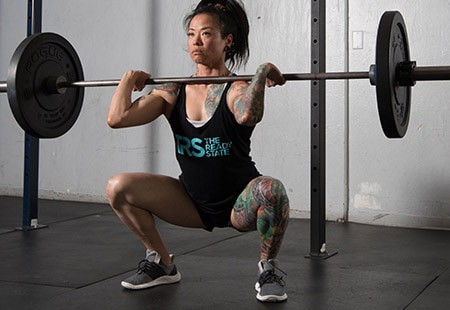
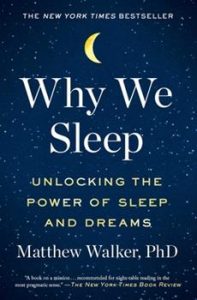
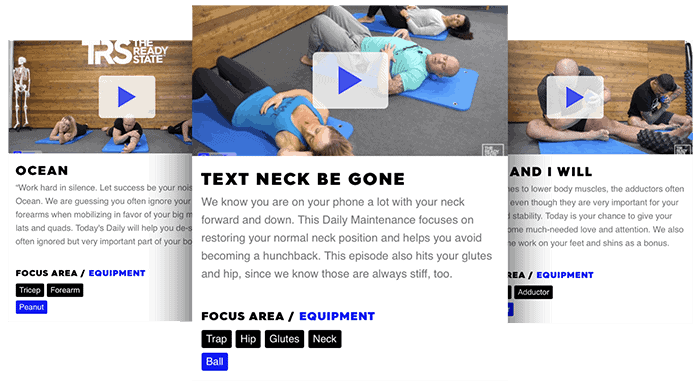






Hi Juliet,
This is wonderful and I completely agree about eating ~differently~ during the phases of the cycle, just like seasons. I was taught that we never ate the same foods during the winter and summer, and there was synergy and reason to it along with availability (not just the other way around), same goes for the menstrual cycle. I wanted to just note that things like Whoop, while great for getting an glimpse into mechanistic performance in the body, can also disrupt our inherit electro magnetic field. There are studies finally coming out about this.
There are many ways to listen to the body that don’t require gadgets — I personally urge people to connect to their body in other means and use tools when they’re really necessary. I find numerical optimization becomes another obsession, definitely saw this in myself and other patients, with diminishing returns. And since EMFs will quite literally change sleep quality, unfortunately, it’s just not great longterm. Just humbly sharing what has been shared with me.
Anyways, y’all are incredible and have enriched my life. Thanks so much for all that you do.
Tamar
PS
A difficult menopause is often due to heavy metals being released into the blood stream after being stored in bones. Pretty much as bones thin after estrogen production diminishes, these metals that were once stored in the bone are now flooding the blood. Binders then become a possible way to help usher them out.
Yay and thanks for pointing these things out! You think there’s limited (or no) research on things that affect athletics and these other subjects for pre-menopausal or menopausal women, imagine how devoid we are of ANY research on women older than that! I’m one of them. (turning 73) Trying to find out about cardiac capacity, enhancing sports performance, protein needs and optimum training tactics for a senior citizen athlete is ridiculously hard. There is zero data for most of. my own questions about fitness, training and older women athletes’ unique needs in research material which I’ve combed relentlessly in vain searches. We as women find gender bias in most aspects of society. This is one more. The solution: band together, share our lived experiences and find like-minded others from whom we can learn. Thank you for your piece here.
Take Dr. Sim’s Menopause for Athletes course!! She addresses the dearth of research on older female athletes and offers real world advice based on what’s science there is as well as her own coaching experience with older women. Well worth the time and money!!
my wife has found bioidentical hormones invaluble in menopause.
T.S Wiley and Lindsey Berkson are great starting points for investigating that.
One of those may have been the one who suggested (paraphrase from recollection)
“We don’t get lower hormone levels because we age. We age because we get lower hormone levels.”
Thanks for this post. Just took Dr Sims’s Menopause for Athletes course and it was amazing.
In the Addressing Sleep…section you say:
“ Chronic low cortisol keeps us from being able to produce enough progesterone, estrogen, and testosterone, which is why women under stress often stop experiencing periods. ”
Did you mean chronically HIGH cortisol?
Love this, Juliet! Thank you so much for sharing your wisdom and insights. As a professional ballet dancer, these topics have been close to my heart all my life and it is wonderful to see the body of knowledge that is now accruing to help guide women to optimize performance and health. Now a Primal Health Coach, I love guiding people to live optimally through the Four Pillars of Health; Intelligent Movement, Nourishing Food, Quality Rest and Recovery, and Stress Resilience/Positive Mindset. I love the work you are doing to empower others! Many thanks, and best to you.
Jennifer
I have forwarded your article to my sister who is sure to benefit from it. My biggest takeaway is the importance of sleep. I purchased and read Matthew Walker’s book, have listened to him on YouTube, and consequently will never again purposely shortchange myself of sleep. Thank you very much…
Thank you again, Juliet! I am rereading this and wondering, for the 130-140g/day recommended for active women, do you add more on training days? Or is that a safe level across the board for training and non training days?